Speaking of Nature: Where have all the birds gone?: They’re there, and here’s a handy tool to keep track of their appearances
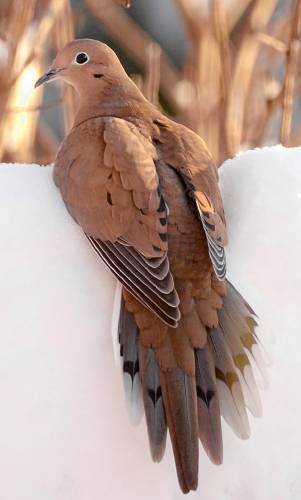
This photo of a Mourning Dove sitting on a snowbank shows the gorgeous details of the tail, which is not often obvious. Now imagine 40 of these birds visiting your feeders all at the same time. PHOTO BY BILL DANIELSON
| Published: 02-06-2024 1:46 PM |
I receive emails from readers throughout the year and I do my best to respond to them in a timely manner. Sometimes messages pile up in my inbox and sometimes things get filed incorrectly, but I genuinely do try to respond to every one. This year (the winter of 2023-24) I have noticed one topic that has arisen more often than any other: Where have all the birds gone?
Well, today it is my intent to assuage your fears by introducing you to an invaluable tool of my own creation. Just as science found it necessary to categorize the magnitudes of hurricanes and earthquakes, I have found it necessary to record the numbers of a particular bird species so that I might be able to more easily compare its appearance rates from one year to the next. But first, we have to address a global weather phenomenon.
This has been an El Nino year, which means that the weather is a bit different than normal. So far, I think that everyone has noticed that temperatures have been quite a bit warmer than usual. I keep track of ridiculous things like the first day that a temperature benchmark was reached in each year. For this current winter, I logged the first day of temperatures below 10 degrees Fahrenheit as Jan. 15 and my records indicate that this is the latest record for such an event in over a decade. So we are not imagining things. It really has been a warm winter.
Another item of interest is the fact that we are currently about 10 inches of snow below normal for this winter. Despite the results of our most recent snow storm (which created a Doctor Zhivago landscape that was simply gorgeous to behold) we haven’t had a lot of snow to deal with. So when you combine warmer-than-normal temperatures with less-than-normal snowfall, it is reasonable to expect that our feeders might be quiet. However, that will all tend to change when more normal winter conditions return. As I mentioned in a recent column, the birds that visit our feeders tend to be foul-weather friends.
So, now that we’ve gotten those observations out of the way, I proudly introduce you to a tool of my own making — The MODO Swarm Scale! Here, the “MODO” stands for “Mourning Dove,” which is a beautiful bird that probably visits most back yards. Invented in 2019, the MODO Swarm Scale was intended to convey the magnitude of a flock observed at my feeders in the wintertime. I call it a “swarm” because the doves usually arrive all at once, devour all of the seed that I have put out, and then leave all at once. This sometimes leaves me thinking, “what just happened?”
A “minor” event involves 11 to 20 individual birds, a “medium” event involves 21 to 30 birds, a “major” is 31 to 40 birds, an “epic” is 41 to 50 birds and a “legendary” is over 50 individual doves at the same time.
So if I am watching my feeders and I am able to count 22 Mourning Doves all at the same time, then I would record that as a medium swarm. The whole idea is that I have to record only the maximum number of birds that I see at the same time.
So far, the winter of 2023-24 has seen very few swarms that even register at the minor level. The Mourning Doves have been here, but generally in the range of four to eight birds. I recorded my first minor swarm on Nov. 19 and since then I have recorded a total of 19 swarms, 15 of which have been of the minor variety. As with the general lack of snow for the winter, this is a number of swarms that I would categorize as below normal.
Article continues after...
Yesterday's Most Read Articles
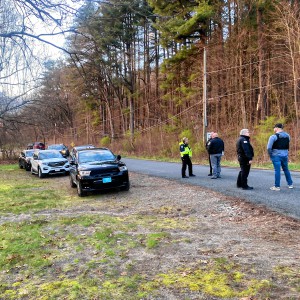 Police report details grisly crime scene in Greenfield
Police report details grisly crime scene in Greenfield
 Super defers Amherst middle school principal pick to successor; one finalist says decision is retaliation for lawsuit
Super defers Amherst middle school principal pick to successor; one finalist says decision is retaliation for lawsuit
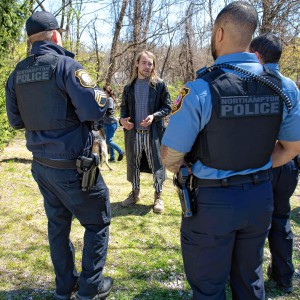 Homeless camp in Northampton ordered to disperse
Homeless camp in Northampton ordered to disperse
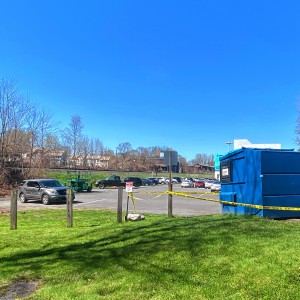 Authorities ID victim in Greenfield slaying
Authorities ID victim in Greenfield slaying
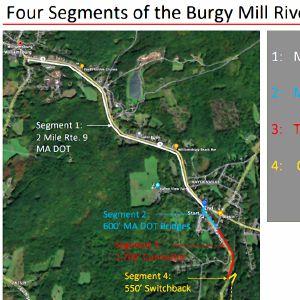 Haydenville residents resist Greenway trail plan, float alternative design
Haydenville residents resist Greenway trail plan, float alternative design
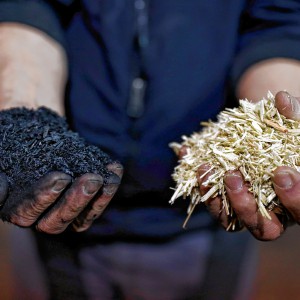 Locking up carbon for good: Easthampton inventor’s CO2 removal system turns biomass into biochar
Locking up carbon for good: Easthampton inventor’s CO2 removal system turns biomass into biochar
However, things took a turn on Jan. 15 when the temperature dipped below 10 degrees Fahrenheit for the very first time. At 7:32 a.m. the doves began to arrive and I eventually counted 25 of them, which qualified as a medium swarm. They only stayed for three minutes before they all left in an explosion of wings. Then, at 7:44 a.m., the birds returned. More and more kept showing up and eventually I counted 48 individual birds that were all on my deck at the same time. This qualified as an epic swarm and it gave evidence that the birds are out there. Since then I have only recorded three other swarms; two minor and one medium. Thus far, it has been a quiet year.
It is worth mentioning that the arrival of snow that has lasted for more than just a few days has definitely made a difference in the numbers of birds at my feeders. Dark-eyed Juncos, White-throated Sparrows, American Tree Sparrows and even Black-capped Chickadee numbers have all increased noticeably over the past week. The sparrows don’t have access to the ground, where they can forage for wild food sources, so the seeds on my deck are a major relief to them. Lots of snow and cold temperatures will result in high feeder activity, while no snow and relatively warm temperatures will result in lower feeder activity. The birds are out there, but until recently they have simply been doing other things.
I hope that this has managed to put some of your fears to rest. I routinely see 15 to 20 different species of birds at my feeders when I have the chance to observe for an hour or more. All of the regulars are there, but they just haven’t been as desperate for much of the winter … so far. There is always a chance that we might get another big storm and this may increase the number of birds that visit your feeders.
If you have Mourning Doves, then you can try to use my Swarm Scale. Let me know if you witness an epic or legendary event in your yard.
Bill Danielson has been a professional writer and nature photographer for 26 years. He has worked for the National Park Service, the US Forest Service, the Nature Conservancy and the Massachusetts State Parks and he currently teaches high school biology and physics. For more in formation visit his website at www.speakingofnature.com, or go to Speaking of Nature on Facebook.

 Valley Bounty: Grass-fed animals that feed the grass: Gwydyr Farm in Southampton focuses on ‘restoring the connection between land, food and people’
Valley Bounty: Grass-fed animals that feed the grass: Gwydyr Farm in Southampton focuses on ‘restoring the connection between land, food and people’ Weekly Food Photo Contest: This week’s winner: Mary Chicoine of Easthampton
Weekly Food Photo Contest: This week’s winner: Mary Chicoine of Easthampton  Speaking of Nature: A romantic evening for two birders — To hear the wonderful sounds of the Saw-whet Owl one must go outside at night
Speaking of Nature: A romantic evening for two birders — To hear the wonderful sounds of the Saw-whet Owl one must go outside at night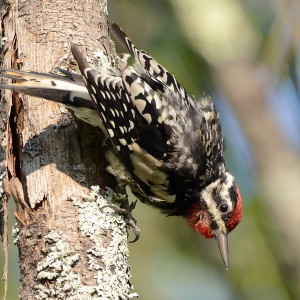 Speaking of Nature: Who is that mysterious woodpecker?: Presence of the Yellow-bellied Sapsucker in winter has caused quite a stir with readers
Speaking of Nature: Who is that mysterious woodpecker?: Presence of the Yellow-bellied Sapsucker in winter has caused quite a stir with readers
